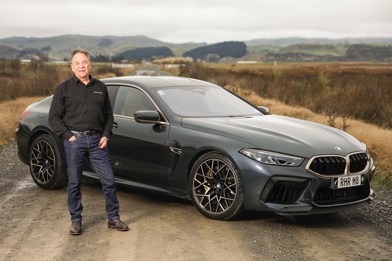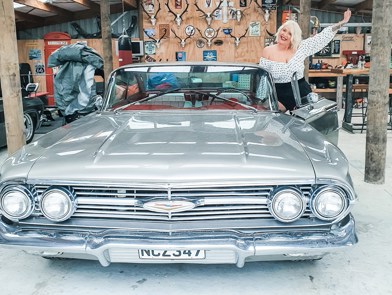Hyundai New Zealand's all-new Ioniq EV and hybrid liftbacks have wide appeal
Hyundai New Zealand's entry into the hybrid and electric vehicle market with its Ioniq liftback is set to make an impact on fleets and private buyers alike.
The company has launched two variants -- a hybrid and an EV -- with a plug-in hybrid to join the line-up later this year.
The Ioniq hybrid is priced from $46,990, with a higher-specced Elite at $52,990. The entry-level EV is priced at $59,990, making it the cheapest new electric vehicle in New Zealand, just below Mitsubishi's popular, and successful, Outlander PHEV.
The higher-specced Elite EV is $65,990.

The hybrid is powered by a 1.5-litre petrol engine producing 77kW of power and 147Nm of torque and paired with a six-speed, dual-clutch transmission.
The EV Ioniq's battery produces 88kW of power and 295Nm of torque, and has a single-speed, direct-drive transmission, with N (neutral), R (reverse) and D (drive) buttons in the centre console that indicate your transmission needs.
The battery has a 10-year unlimited warranty.
The five-seater Ioniq is 4470mm long, 1820mm wide and 1460mm high, with a large boot space of 350 litres, with the hybrid weighing 1420kg and the EV 10kg heavier.
The good-looking hatchback has air curtains over the front wheels, a rear spoiler and sleek appearance and the C-shaped daytime running lights give it a sophisticated appeal. The EV has a plastic nose, rather than grille, differentiating it from the hybrid.
Though it has been compared with Toyota's Prius, it's a vehicle that's not going to be mistaken for an Uber and instead fulfils the needs of fleets looking for economic vehicles while private buyers will consider it.
The Government has pledged to have 64,000 EVs on our roads by 2021.

Hyundai NZ has had 12 Ioniq's in the country over the past few months, showing them to fleet buyers, councils and government departments. The Ioniq's main market is fleet; one council is already set to trial the EV hatch.
Hyundai NZ held the media launch in Queenstown to emphasise the EV's 200km "real-world driving" range. Leaving the Hilton Hotel near the airport, the 175km drive headed to Glenorchy and then Kinloch before returning to the Hilton.
The media fleet's four EVs made the round trip but one had to make the journey from the outskirts of Queenstown in "limp" mode (with air con switched off and maximum eco functions) and arrived at the hotel with 8km left in the battery, causing range anxiety.
The next day, Driven tested the EV in its brake regenerating mode which not only has a major impact on keeping your battery topped up (and reducing range anxiety) but also changes the drive style of the vehicle.
Like the BMW i3 EV, the moment you take your foot off the accelerator the Ioniq begins to brake (and tops up the battery).
The downside is that, unlike the i3, the Ioniq doesn't activate brake lights so vehicles behind don't realise you are slowing down.

The first time you take your foot off the accelerator is a shock for passengers as if feels as though the driver is braking, but swap over and get behind the wheel and it's a great feature.
Another annoying aspect for first-time drivers is the lane keep assist and lane departure warning system, which keep the car in lanes to such an extent it feels like an autonomous vehicle. If I owned an Ioniq I'd turn off lane keep assist.
The EV has the standard two charge points with an estimated time of four hours to top up the battery from an adaptor or up to 14 hours from a standard home plug.
The hybrid is similar to Prius when it comes to driving characteristics, while "sport" mode gives the Ioniq added power and the interior is better looking than the Toyota.
Hyundai Ioniq
Hybrid (from $46,990)
EV (from $59,990)
Pro: Great looking vehicle
Con: Range anxiety - still











